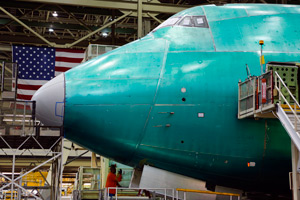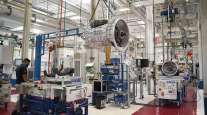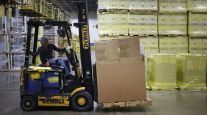Factory Orders Rebound on Strong Demand for Transportation Equipment

New orders for U.S. factory goods rebounded strongly in June on robust demand for transportation equipment and other goods, a hopeful sign for the struggling manufacturing sector.
The Commerce Department said Aug. 4 that new orders for manufactured goods increased 1.8% after declining 1.1% in May.
Factory activity has been stymied by a strong dollar and spending cuts in the energy sector after last year's sharp plunge in crude oil prices. Tepid global demand also has weighed on manufacturing, which accounts for about 12% of the domestic economy.
Those factors have eroded the profits of multinational companies like Caterpillar Inc. and Procter & Gamble Co., the world's largest household products maker, and Whirlpool Corp., the global home appliances giant.
Though there are signs that the energy spending drag is easing, the dollar's strength will likely remain a constraint. The dollar has gained 15% against the currencies of the United States' main trading partners since June 2014.
U.S. stocks were slightly higher after the data, while prices for U.S. government debt fell. The U.S. dollar was trading lower against a basket of currencies.
Orders for transportation equipment surged 9.3% in June, reflecting a 65.4% jump in aircraft bookings. There also were increases in orders for machinery, furniture, fabricated metal products and electrical equipment, appliances and components.
The department also said orders for nondefense capital goods excluding aircraft — seen as a measure of business confidence and spending plans — increased 0.7% instead of the 0.9% rise reported last month.
Shipments of these so-called core capital goods, which are used to calculate business equipment spending in the gross domestic product report, increased 0.3% in June. Shipments were previously reported to have dipped 0.1%.
The upward revisions to core capital goods shipments, combined with a report on Monday showing stronger construction spending in May and April than previously reported, suggest second-quarter GDP could be revised higher when the government publishes its second estimate later this year.
The Commerce Department reported last week that the economy expanded at a 2.3% annual pace in the second quarter.
A 0.6% increase in manufacturing inventories in June also pointed to an upward revision to second-quarter GDP. The rise in inventories followed a 0.1% gain in May.
Unfilled orders at factories were unchanged in June after two straight months of decreases, potentially signaling stability in factory activity.
Reporting by Lucia Mutikani; Editing by Paul Simao




